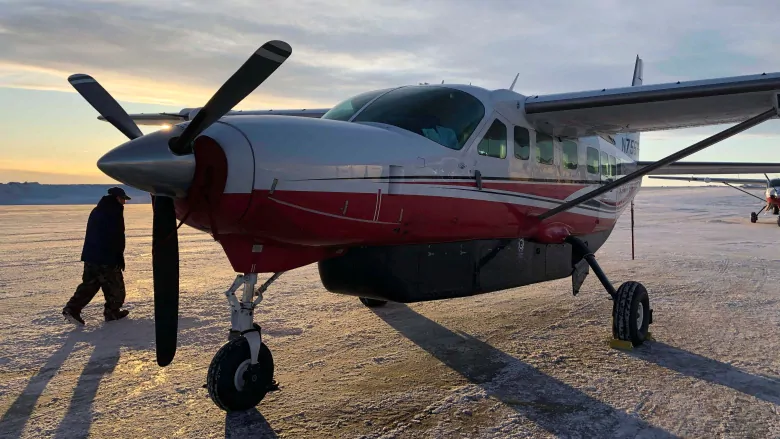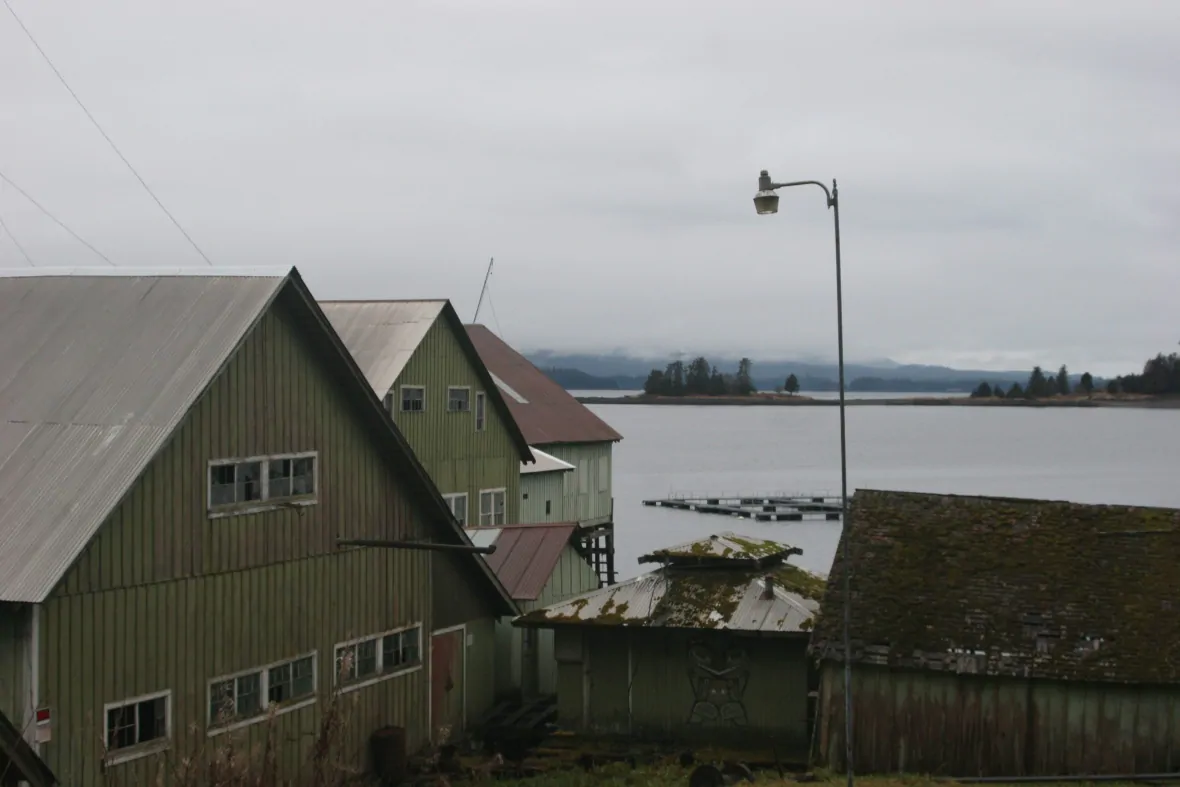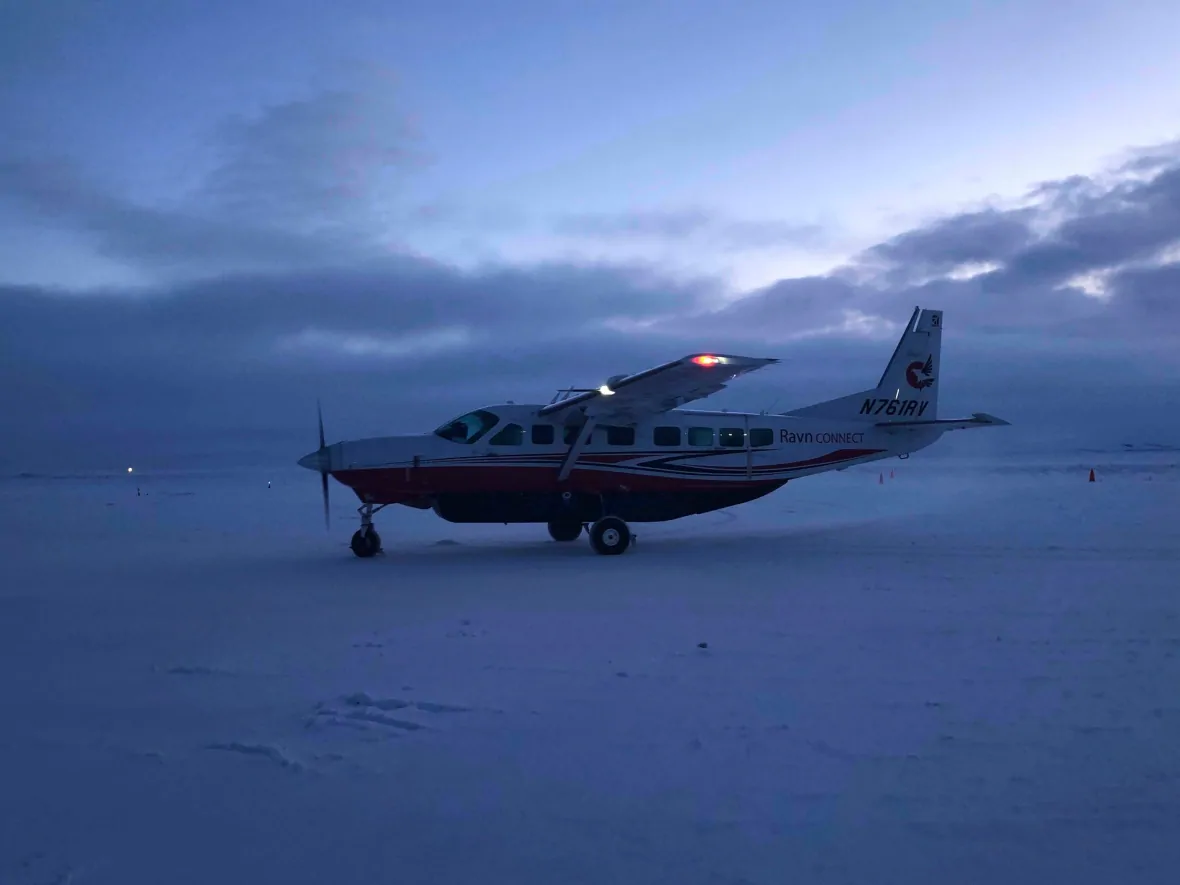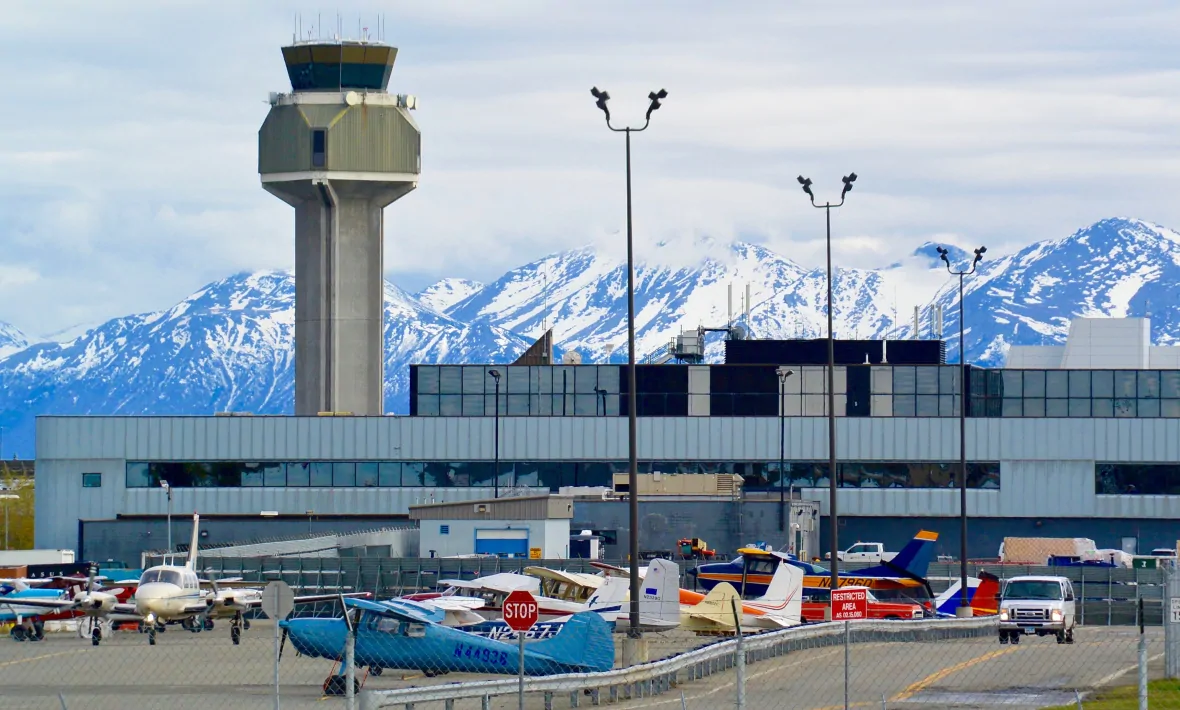Airline shutdown creates new challenges for rural Alaska

In April, in the midst of the COVID-19 pandemic, Atqasuk’s tribal co-ordinator Millie Frankson received word that the grocery order she was counting on wouldn’t be delivered to her remote arctic village.
To get her $535 worth of food, she would have to drive two hours on a makeshift road across the ice to reach a cargo storage facility in Utqiagvik, where her purchase remained.
“I was lucky enough that the ice road was still open,” she said.
The unexpected trip was due to the abrupt shutdown of Alaska’s largest regional airline, RavnAir Group, which on April 4 announced it had filed for bankruptcy, citing the “COVID-19 pandemic and the unprecedented loss of 90 per cent of passenger revenue.”
The airline halted all service with only a few hours’ notice, leaving people in the more than 115 Alaska communities it served with little to no time to make other arrangements. Nearly all of them are accessible only by plane or boat.
In the days that followed, community leaders, the U.S. Postal Service, and other local air carriers scrambled to ensure essential freight would reach Alaska’s remote villages and passengers could get where they were going.
“I was impressed with the leadership, and just how adaptable we were in a couple days,” U.S. Postal Service representative David Rupert said of the combined effort.
The sudden closure exposed vulnerabilities in a supply chain that relies heavily on air travel to deliver everything from building supplies and car parts to bananas, baby food, laundry detergent and mail to hundreds of communities.
“[Ravn’s closure] hit the North Slope really hard,” said Frankson. “It was just a big shock to the whole North Slope Borough. Like, how are we gonna get our food, our mail, our medical needs?”
Villages prepare for uncertainty
Air service is vital in Alaska, where about 82 per cent of communities lack road connections, according to the state’s transportation agency. But the pandemic has limited travel and flights in the state, forcing some air carriers to manage increased loads.
Villages are taking steps to prepare in response to the uncertainty.
The Native Village of Deering has been providing additional fuel and ammunition for subsistence use, so residents can hunt for caribou and ptarmigan if cargo shipments are delayed.
Similarly, the Organized Village of Kake recently requested emergency permits to hunt deer and moose out of season, after their grocery shipments didn’t arrive on schedule.

Frankson started devising a plan to get the food she’d ordered from an Anchorage store to her Atqasuk home soon after getting word that “completely out of nowhere,” RavnAir had shut down.
Such orders already face a long journey to the village of 300 people. Another airline, Northern Air Cargo, carries them the 1450 kilometres from Anchorage to Utquiagvik. But Northern’s planes can’t land on Atqasuk’s small runway, so the food is transferred to Ravn for the last 100 kilometres.
Northern Air Cargo still had access to Ravn’s cargo area the day Ravn closed, so Frankson called her sister to pick up the meat package during business hours.
“Me and my other half drove on the ice road. It took us two and a half, three hours to drive and get our food. So we lucked out.”
Frankson was worried others may have had fresh produce, fruit and meat still sitting at Ravn.
‘It’s very disruptive to a small market’
Almost all of the communities served by the airline are accessible only by plane or boat. For about 20 villages, RavnAir was their sole air service provider.
“[Ravn] had a very big footprint, and when a large, strong carrier goes out of business in just a short period of time — and closes that many stations and discontinues that many flights — it’s very disruptive to a small market,” explained Rob Everts, president of Everts Air Cargo, an airline company based in Fairbanks.
Filling the gap in service was a logistically complicated process that involved about a half-dozen other local carriers, including Grant Aviation, Ryan Air and Everts Air Cargo. The state’s various regions can be vastly different from one another in terms of weather, geography, population and demands.

“Seventy-two communities are going to have 72 different ways of doing things,” said Lee Ryan, president of Ryan Air, an Inupiaq-owned air cargo carrier based in Unalakleet that primarily serves western Alaska.
While essentials are now reaching their intended destinations, the air carriers and villages are still adjusting to the changes caused by the coronavirus and the Ravn bankruptcy.
In Alaska’s new normal, flights don’t come as often or as reliably as they once did.
There are fewer jet flights from Anchorage or regional hubs to smaller villages. Scheduling is more difficult, and trips can take longer. With fewer flights available for passengers, villagers are troubled that they cannot travel to do household shopping.
Also, some air carriers are having to take on much larger loads while still ensuring they have the necessary equipment to do so safely.
“I’ve been amazed at our team, at how well they’ve adapted to move the kind of mail we’ve needed to,” said Rob Kelley, president of Grant Aviation, which serves communities throughout southwest Alaska, an area slightly larger than California.
It used to be 11,000 to 13,000 kilograms would get moved out of Bethel on a busy day. “A couple weeks ago, they moved 87,000 pounds [39,000 kilograms] of mail in one day,” Kelley said.

It’s been helpful that fewer people have been travelling due to social distancing orders. This has enabled the carriers to focus on cargo delivery for the time being.
However, there will be new considerations when passenger travel starts to open up again.
“How do you maintain the whole social distancing while you have to get in a small airplane and fly to a larger community to grocery shop, and then when you get there, inventories are down and groceries that you might have needed are gone?” asked Alice Ruby, mayor of Dillingham.
Related stories from around the North:
Canada: Scrapped 2020 cruise season will cost communities in Nunavut, Canada almost $1 million, CBC News
Finland: Finland joins other Nordic countries in virtual tourism due to pandemic, Yle News
Greenland/Denmark: COVID-19 could delay Kingdom of Denmark’s Arctic strategy, Eye on the Arctic
Iceland: Iceland and Greenland implement COVID-19 testing for travellers, Eye on the Arctic
Norway: Scandinavian airlines cancel thousands of flights and lay off most of their employees, The Independent Barents Observer
Sweden: Sweden seen as major source of COVID-19 in Western Finland region, Yle News
United States: Alaska’s largest rural airline, Ravn, files plan to liquidate as bankruptcy proceeds, Alaska Public Media



